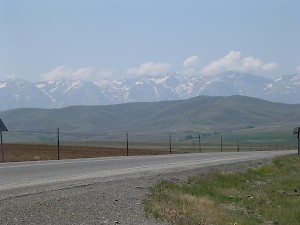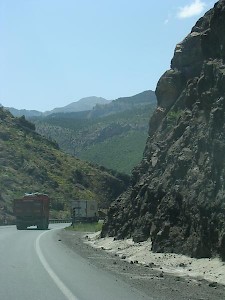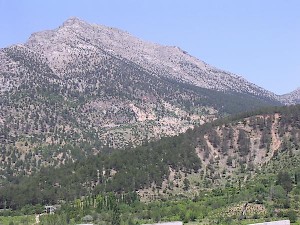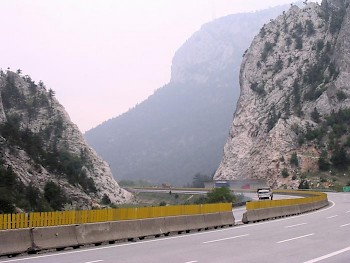Taurus
Q172556Taurus: mountain range in southern Turkey, modern Toros Dağlari.

In Antiquity, "Taurus" was the name of a series of mountain ranges, which begins as far to the west as Caria and Lycia, where it is called "Western Taurus". The Bey Dağlari is 3086 meters high. The central part of this line of mountains is the range that separates Cilicia from Cappadocia. Here, the highest peak is the Kali Dağ, which is 3734 meters high. From here, the range known as Antitaurus stretches to the northeast, and continues to the river Euphrates, where the famous Nemrud Daği is the last summit. King Antiochus of Commagene (70-31 BCE) built a tomb on the summit of Nemrud daği.

On the other side of Euphrates begins Armenia. The mountains across the river are also called Antitaurus. North of these is the mountain that is now (incorrectly) known as Ararat. Several Greek authors (e.g., Arrian) imagine that the Taurus mountain range continues further to the east, applying the name to the Elburz and Hindu Kush.
The Taurus Mountain range is a result of the collision of the African Plate and the Arabian Plate against the Eurasian Plate. In eastern Cilicia, the Taurus is joined by the Amanian Mountains, which run to the south, in the direction of the Lebanon; they are the result of the collision of the African Plate against the Arabian Plate. If these four mountain ranges are conceptualized as a T, the Western Taurus, central Taurus, and Antitaurus are the horizontal bar and the Amanus and the Bargylus Mountains the vertical one. This last-mentioned range is essentially a continuation of the more famous Lebanon.

Because it is hard to cross the Taurus, this mountain range was the natural frontier between two major regions of the ancient world: Anatolia and Syria. Assyrian and Babylonian imperialism ended in "the silver mountains", as the Taurus was called. It was the frontier of the Seleucid and Attalid empires; between the Roman dioceses Oriens and Pontus; and between the Byzantine Empire and the Caliphates of Damascus and Baghdad. When he abandoned the Byzantine positions in Syria to make the Taurus the frontier between his own empire and the Caliphate, the emperor Heraclius reportedly said: "Peace be upon you, Syria; what a wealthy region we leave to our enemies" - expressing the reason why so many people from Anatolia have sought control of the land south of the Taurus.

One of the few roads across the Taurus is the Cilician Gate, which is today called Gülek Bogazi. In Antiquity, it was very narrow and therefore of great strategic importance: according to the Greek commander Xenophon, only one cart could pass through the narrow pass.note Among the commanders who forced this pass were Alexander the Great (333 BCE) and Septimius Severus (193/194 CE).